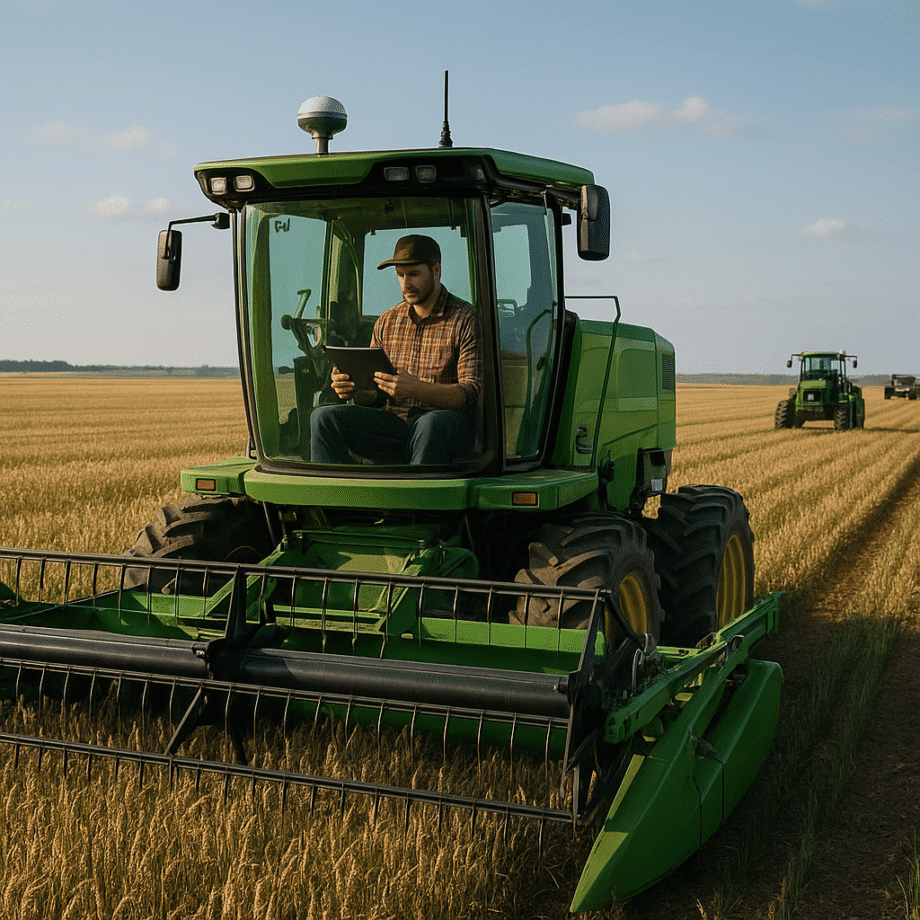The rapid evolution of agricultural machinery has revolutionized the way farmers manage crops, livestock, and land resources. By embracing cutting-edge technologies, modern agriculture is becoming more efficient, sustainable, and data-driven. This article explores various types of smart machinery, highlights their transformative innovation, examines benefits and challenges, and outlines future prospects in the farming sector.
Types of Smart Machinery in Agriculture
Smart Tractors
Smart tractors are at the forefront of automation in agriculture. Equipped with GPS navigation, onboard computers, and advanced sensors, these machines can perform precision tasks without human intervention. Farmers can program planting patterns, soil tillage depth, and fertilizer application rates to maximize yield and minimize waste.
Autonomous Drones
Drones have transformed crop monitoring and field analysis. Fitted with high-resolution cameras and multispectral imaging, they collect valuable data on plant health, moisture levels, and pest infestations. Integration with IoT platforms allows real-time data transmission to farm managers, enabling rapid decision-making and targeted interventions.
Robotic Harvesters
Harvesting robots use machine vision and robotic arms to pick fruits, vegetables, and grains. Unlike manual labor, these machines operate continuously under diverse weather conditions. They adapt to fruit size, ripeness, and stem strength with minimal crop damage, leading to higher productivity and reduced labor costs.
Automated Irrigation Systems
Modern irrigation setups combine soil moisture probes, weather stations, and irrigation controllers. Based on collected data, the system delivers water precisely when and where it is needed. This precision watering reduces water usage by up to 50%, supports plant health, and lowers energy consumption associated with pumping.
Benefits of Smart Machinery
Implementing smart machinery yields numerous advantages for farmers, the environment, and the global food supply chain. Below are key benefits:
- Increased Efficiency: Automated operations run 24/7, dramatically reducing downtime and labor needs. Tasks such as plowing, planting, and spraying are executed with consistent accuracy.
- Enhanced Precision: GPS-guided equipment and variable-rate technology allow site-specific management of seeds, fertilizers, and pesticides. This reduces input costs and environmental impact.
- Improved Crop Yields: By optimizing growing conditions and responding in real time to crop stress, smart machinery contributes to healthier plants and higher harvest volumes.
- Resource Conservation: Water, fertilizers, and fuel are used more judiciously, promoting sustainability and reducing greenhouse gas emissions.
- Data-Driven Insights: Continuous data collection supports predictive analytics. Farmers can foresee pest outbreaks, forecast yields, and schedule maintenance before breakdowns occur.
- Cost Savings: Lower labor costs, fewer input wastages, and preventive maintenance reduce overall operational expenses over time.
- Scalability: Smart systems easily scale from small family farms to large commercial operations, adapting to diverse crop types and field sizes.
Implementation Challenges and Solutions
Despite clear benefits, adopting smart agricultural machinery poses several challenges. Addressing these obstacles is crucial for widespread integration.
High Initial Investment
Advanced machinery can be prohibitively expensive for small-scale farmers. Leasing programs, government subsidies, and cooperative ownership models help distribute costs and make technology accessible.
Technical Complexity
Operating and maintaining sophisticated systems requires technical know-how. Training programs, online tutorials, and partnerships with equipment manufacturers can equip farmers with necessary skills.
Data Security and Connectivity
Dependence on cloud-based platforms and wireless networks exposes operations to cybersecurity risks and connectivity issues in remote areas. Employing encrypted data channels and investing in local network infrastructure mitigates these concerns.
Integration with Legacy Equipment
Older machinery may not support modern interfaces or data protocols. Retrofitting kits, modular sensor attachments, and open-source software bridges can enable seamless communication across equipment generations.
Regulatory and Environmental Considerations
Local regulations may restrict drone usage or chemical application methods. Collaborating with regulatory bodies and adopting eco-friendly additives ensures compliance and community acceptance.
Future Prospects of Smart Agricultural Machinery
Looking ahead, several trends promise to further transform farming practices:
- Artificial Intelligence Integration: AI-powered analytics will provide deeper insights into soil biology, climate patterns, and market demands, enabling hyper-personalized farm management strategies.
- Swarm Robotics: Fleets of small, cooperative robots will handle tasks collaboratively—planting seeds, weeding, and harvesting—instead of relying solely on large machines.
- Edge Computing: Processing data directly on machinery reduces latency, improves reliability, and cuts down on data transmission costs.
- Bio-Sensing Technology: Next-generation sensors will detect plant hormones, nutrient deficiencies, and pathogens at molecular levels, allowing even more precise interventions.
- Renewable Energy Integration: Solar- and wind-powered equipment will lower the carbon footprint of field operations while ensuring energy autonomy in remote locations.
By embracing these innovations, the agricultural community will continue its shift toward a smarter, more connected, and resilient future. The synergy between technology and traditional farming knowledge holds the key to feeding a growing global population while preserving the planet’s resources for generations to come.
